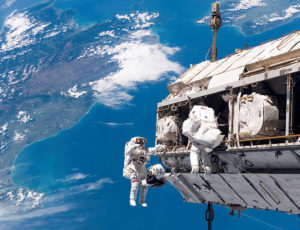
Artificial Intelligence an excellent tool for space exploration
Our scientists’ ability to understand the workings of the universe has grown a lot. At present, our satellites send us several hundred terabytes worth of information every year. Continuous technological development drastically increases the amount of data we can acquire from space. Researchers now have the problem of being unable to fully analyze and use the data received because of the massive amount received daily. This is where artificial intelligence (AI) becomes an asset for the study of space.
Astronomer Enrico Petrillo mentioned an example of the type of problems they face when studying space. Petrillo and his team were looking for gravitational lens. This refers to a naturally occurring phenomenon in deep space that bends space and light around it. The phenomenon allows astronomers to look at old and distant parts of the universe which are normally beyond our view. These gravitational lenses are critical in understanding the origins of the universe.
Sadly, locating these gravitational lenses takes a great deal of tedious work. Lenses are usually found by people looking for different objects. According to Liliya Williams, an astrophysics professor at the University of Minnesota, “Some have been discovered by accident, by people looking for something completely different. There were some found by people looking for them, through two or three surveys. But the rest were found by chance.”
A solution based on Artificial Intelligence
Gravitational lenses are difficult to spot. Astronomers use images acquired from observatories, and space satellites. The number of images that have to be analyzed is staggering. And, people are prone to error especially when handling repetitive tasks.
Petrillo and his colleagues then turned to an AI solution developed by Silicon Valley. The program they used was composed of digital “neurons” structured similarly to the human brain. Neurons create responses for inputs. When the program is fed visual information (such as pictures), they can capture and analyze data quickly. When large quantities of data are fed into the program, it is able to immediately spot and record patterns.
After workng on and fine-tuning the program for application in space imagery, the scientists were able to drastically increase their efficiency. Petrillo estimates that a full-time analyst working 24 hours everyday on finding gravity lenses would probably just find five or six lenses in a week.
In contrast, the neural network was able to examine 21,789 images over the course of 20 minutes. The parameters set were quite broad that the computer did not miss any gravitational lenses.
During the tests, it produced 761 potential candidates. This number was then examined by researchers, and the number was narrowed down to 56. By Petrillo’s assessment, a third analysis by researchers will provide the final number.
By their estimates, that is roughly one lens spotted per minute. This is a huge improvement compared to the decades spent by the scientific community to identify the over one hundred gravitational lenses. The increase in speed is incredible.










